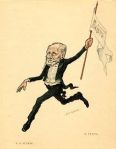Anna Pavlovna (Matveyevna) Pavlova was one of the most famous and influential ballerinas of all time. She was born on the 12th February [O.S. 31st January] 1881 in Saint Petersburg and was introduced to the art form of ballet by her mother, who took her to see The Sleeping Beauty in 1890, shortly after the première. From that moment, it was her dream to become a ballerina. Pavlova was accepted into the Imperial Ballet School at the age of 10, but was taunted by her classmates for her unusual and rather sickly physique. They even gave her cruel nicknames such as “the broom” and “la petite sauvage”, but the young Pavlova was undeterred and trained hard to improve her technique. She was taught by the great teachers of the time – Christian Johansson, Pavel Gerdt and Enrico Cecchetti and finally entered the classe de perfection of Ekaterina Vazem in 1898. Upon Pavlova’s graduation from the school in 1899, it was clear to her teachers that she was a different kind of ballerina, with many critics raving that her style greatly resembled that of the Romantic ballerinas of the early 1840s.
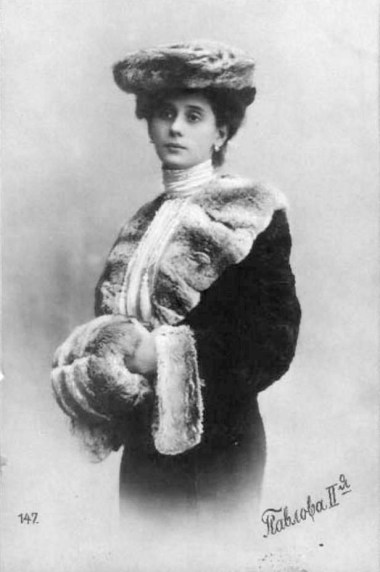
Petipa first noticed Pavlova when she was a student and fell completely in love with her dancing. When she was 10 years old, she danced in his ballet A Fairy Tale, which was choreographed for the Imperial Ballet School and later danced a leading role in his ballet The Two Stars for her graduation performance. Petipa took the young ballerina under his wing, for upon her graduation in 1899, Pavlova bypassed the corps de ballet and joined the Imperial Ballet as a coryphée. It was in her first season with the company that signs of a promising career already began to show. One of Pavlova’s earliest roles with the Imperial Ballet was the Fairy Candide in The Sleeping Beauty. However, on the night of her début in the role, the 18 year old ballerina was so nervous about performing the variation, fearing that she was not technically accomplished enough to dance it. During the performance, when the time was approaching for her to perform her variation, Pavlova panicked in the wings, so to calm her down, two of the other fairies, Lyubov Egorova and Marie Petipa, quickly came up with new steps for her to perform, which she did. However, during one of the intervals, Petipa approached Pavlova and scolded her for changing the steps, telling her to dance his choreography only in future. Subsequently, Pavlova was apparently never cast as the Fairy Candide again.
Another of her earliest roles was Zulma, one of the attendants of the Queen of the Wilis in Giselle. In February 1900, she created the role of Frost in The Seasons and in April, she débuted as Eos in The Awakening of Flora, which, that same year, became the ballet in which she danced her first principal role. In the 1900-01 season, Petipa upgraded her to the leading role of Flora after his daughter Lyubov suddenly retired. The young ballerina was very nervous and was having trouble with her technique for the role proved to be a real challenge for her since it had been created by the virtuosa Matilda Kschessinskaya. Nevertheless, the 19 year old Pavlova débuted as Flora on the 23rd September [O.S. 10th September] 1900 and her performance was a huge success. The critic Bezobrazov described her as “light and graceful” and the role of the Goddess of the Flowers became one of her favourites.
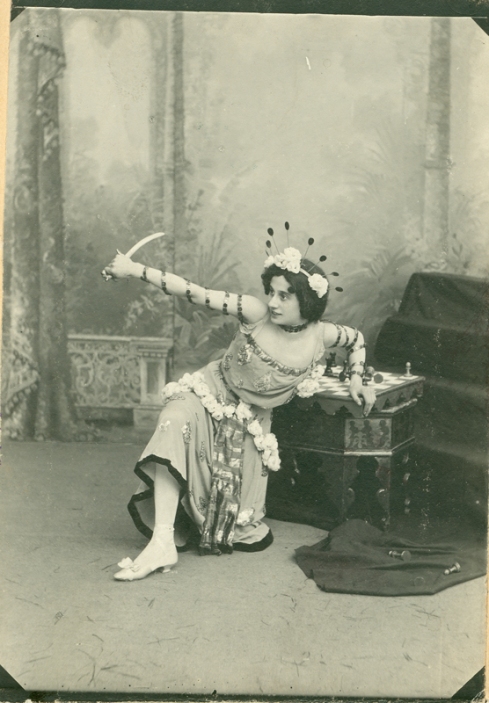
The following season, Pavlova débuted in roles such as Princess Florine in The Sleeping Beauty, Anne and Venus in Bluebeard, the Pas de trois in Paquita, Gulnare in Le Corsaire and Henriette in Raymonda and finally, her breakthrough came in 1902 when she cast as Nikiya in La Bayadère. Eugenia Sokolova coached Pavlova for the role of the temple dancer and her début as Nikiya in April 1902 was hugely successful; the audience were enraptured by the ethereal, frail-looking young ballerina and a new star was born. In the aftermath, Pavlova’s repertoire expanded further with more leading roles that best suited her dramatic gifts, in which Petipa coached her, even after his forced retirement. From 1902 to 1906, Pavlova debuted in roles such as Queen Nisia, Paquita and Princess Aspicia. In 1903, she debuted as Giselle and Ondine in Petipa’s final revival of Giselle and Alexander Shiryaev’s revival of The Naiad and the Fisherman, with both respective revivals staged especially for her.
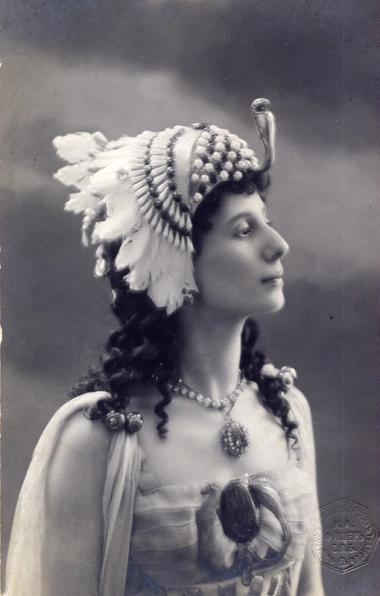
Anna Pavlova became Prima Ballerina in 1906. In 1904, she made her first appearance outside Russia when she danced the title role in Giselle in Warsaw. From 1908, she further danced outside her home country when she and a troupe of her Imperial Ballet colleagues, including Nikolai Legat and Shiryaev, toured the west. In 1909, Pavlova danced with Sergei Diaghilev’s Ballets Russes, where she danced leading roles in several ballets by Mikhail Fokine, including Le Pavillon d’Armide, Egyptian Nights and Les Sylphides. However, due to various dissatisfactions with Diaghilev’s directorship, she pulled out of the 1910 Ballets Russes season. Afterwards, she founded her own company, with whom she would tour across the world. She would later dance again with the Ballets Russes as a guest ballerina and made her final appearance with the Imperial Ballet in 1913.
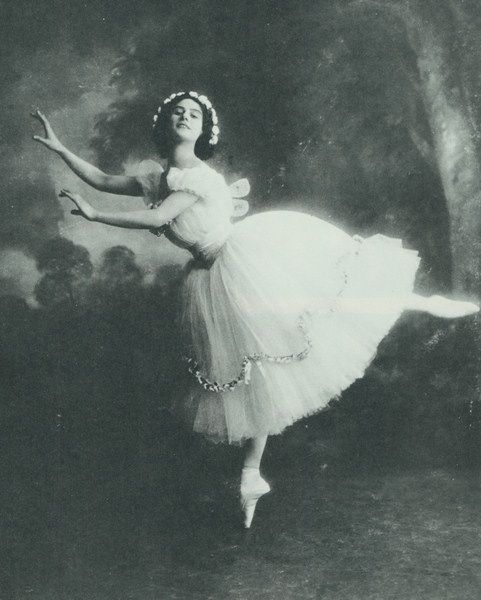
For her own company, Pavlova added abridgements of many of her favourite ballets and passages to their repertoire including Giselle, The Magic Flute, La Fille mal gardée, The Awakening of Flora, The Fairy Doll and Chopiniana (Les Sylphides). She also added new short ballets that were based on scenes from full-length ballets such as Snowflakes, which was based on the snowy forest scene from The Nutcracker. It was also for her company’s repertoire that her famous solo dances, choreographed by Ivan Clustine, were created, including The Dragonfly, The California Poppy and Invitation to the Valse. But the most famous piece in the repertoire that Pavlova performed many times in many different places was her signature ballet and most famous role – The Swan (known today as The Dying Swan), which had been created for her by Mikhail Fokine in 1905.
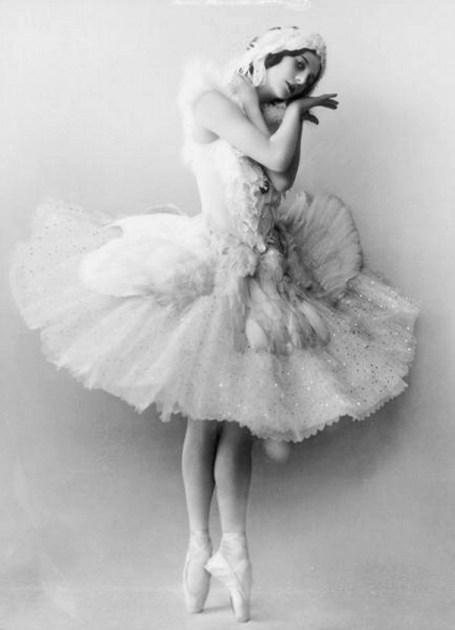
After her departure from Russia, Pavlova permanently settled in London when she purchased her famous London home, Ivy House in the North-west London area of Golders Green in 1912. Following her successful tours of Britain and the United States from 1910 to 1914 and her final appearance in Russia, she launched an aggressive ballet marathon that would last the rest of her life. Together with her company, she set out on tours across the world, visiting many places including Mexico, South America, India, China, Japan and Australia, bringing the art form of ballet to places it had yet to touch.
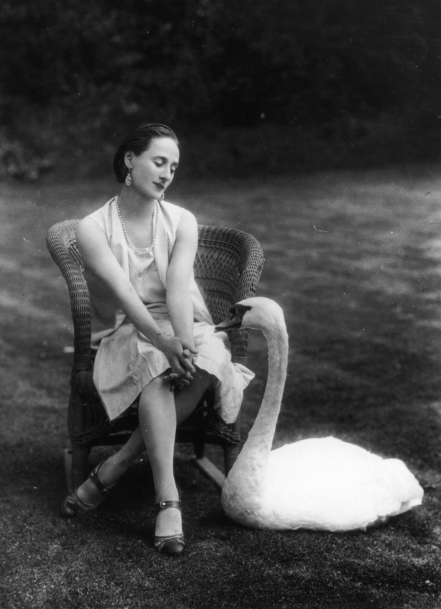
Twenty years of touring around the world had granted Pavlova with much recognition and stardom and gave a greatly important contribution to the art form of ballet, but it all took its toll on her. In 1931, while Pavlova was touring the Netherlands, she contracted pneumonia on a broken-down train. She was brought to the Hotel Des Indes in the Hague and when the Queen of the Netherlands learned of Pavlova’s illness, she sent her best doctor to treat the ballerina. However, by then, Pavlova’s illness was too advanced and had developed into pleurisy.
Anna Pavlova died on the 23rd January 1931, aged 49, three weeks before her 50th birthday. According to her common-law husband, Victor Dandré, as she lay on her deathbed, her last words were “Get my Swan costume ready.” She was cremated and her ashes are retained at Golders Green Crematorium.
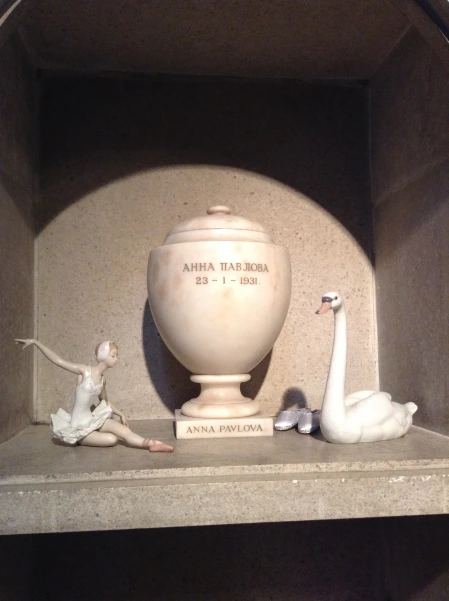
Did you know?
- Pavlova had a very strong view on what music was suitable for ballet, so strong was her view that she greatly detested the music of Igor Stravinsky. One of the reasons she left the Ballets Russes in 1910 was because she refused to dance the title role in Fokine’s ballet The Firebird due to her dislike of Stravinsky’s avante garde score.
- Pavlova was a great animal lover and had many pets, including two swans named Jack and Clara.
- Pavlova was a huge inspiration to Sir Frederick Ashton and the famous so-called “Fred step” that appears in most of his ballets was a sequence that he borrowed from her. The sequence is ‘arabesque, fondu, coupé, petit developpé, pas de bourée, pas de chat.’ This has become Ashton’s choreographic signature, but he, himself, referred to this sequence as the “Pavlova”, paying homage to the great ballerina. Ashton often thought of Pavlova when he created new leading ballerina roles and there is a quote from the Australian dancer and actor, Sir Robert Helpmann that says “every ballerina role that Ashton created could’ve been danced by Anna Pavlova.”
Anna Pavlova’s Imperial Ballet repertoire
- The Fairy Candide in The Sleeping Beauty (**1899)
- Zulma in Giselle (**1899)
- Aurora, the Goddess of the Dawn in The Awakening of Flora (**1900)
- Frost in The Seasons (1900)
- Diana, the Goddess of the Hunt in Le Roi Candaule (**1900)
- Flora, the Goddess of the Spring in The Awakening of Flora (**1900)
- The Third Solo Shade in La Bayadère (1900)
- Anne in Bluebeard (**1901)
- Venus in Bluebeard (**1901)
- Gulnare in Le Corsaire (**1901)
- Princess Florine in The Sleeping Beauty (**1901)
- Henrietta in Raymonda (**1901)
- Lise in The Magic Flute (**1902)
- Nikiya in La Bayadère (**1902)
- Queen Nisia in Le Roi Candaule (**1903)
- The Spanish Doll in The Fairy Doll (1903)
- The Princess’s Retinue in The Magic Mirror (1903)
- Giselle in Giselle (*1903)
- Ondine in The Naiad and the Fisherman (*1903)
- Paquita in Paquita (**1904)
- Medora in Le Corsaire (**1904)
- Kitri/Dulcinea in Don Quixote (**1905)
- Princess Aspicia in The Pharaoh’s Daughter (**1905)
- Swanhilda in Coppélia
- Lise in La Fille mal gardée
- Colombine in Harlequinade
- The Lilac Fairy in The Sleeping Beauty (**1907)
- Madeleine in Le Pavillon d’Armide (1907)
- Bacchante in The Seasons (*1907)
(* – original cast member of role in revival)
(** – year of début performance in role)
Sources
- Money, Keith (1982) Anna Pavlova: Her Life and Art. UK: Alfred A. Knopf
- Pritchard, Jane with Hamilton, Caroline (2012) Anna Pavlova: Twentieth-Century Ballerina. London, UK: Booth-Clibborn Editions
Photos and images: © Dansmuseet, Stockholm © Большой театр России © Victoria and Albert Museum, London © Государственный академический Мариинский театр © CNCS/Pascal François © Bibliothèque nationale de France © Musée l’Opéra © Colette Masson/Roger-Viollet © АРБ имени А. Я. Вагановой © Михаил Логвинов © Михайловский театр, фотограф Стас Левшин. Партнёры проекта: СПбГБУК «Санкт-Петербургская государственная Театральная библиотека». ФГБОУВО «Академия русского балета имени А. Я. Вагановой» СПбГБУК «Михайловский театр». Михаил Логвинов, фотограф. Martine Kahane.
